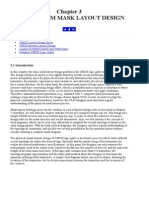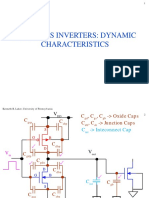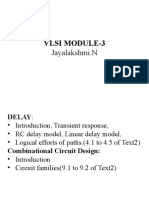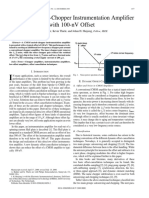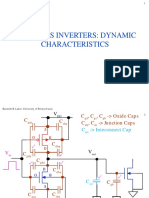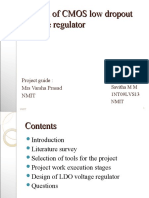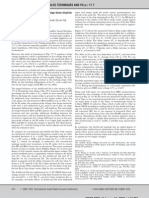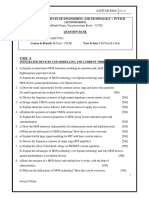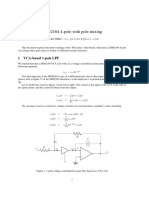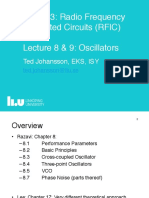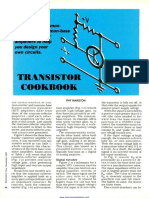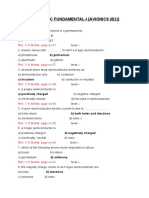0% found this document useful (0 votes)
251 views20 pagesEE476 Vlsi Design: CSE477 L10 Inverter, Dynamic.1 Irwin&Vijay, PSU, 2002
The document discusses the dynamic behavior of inverters from multiple perspectives:
1) Propagation delay is proportional to the RC time constant of the inverter, where increasing the resistances or capacitances will increase delay. Equalizing rise and fall times requires matching the on-resistances of the NMOS and PMOS.
2) Transient response simulations show short overshoots and undershoots as well as rise and fall times slightly longer than theoretical estimates due to non-idealities.
3) Optimizing for performance involves reducing capacitances, increasing transistor widths, and sometimes increasing supply voltage - but excessive increases in width or voltage provide diminishing returns due to parasitic or reliability
Uploaded by
Quốc Việt TạCopyright
© © All Rights Reserved
We take content rights seriously. If you suspect this is your content, claim it here.
Available Formats
Download as PDF, TXT or read online on Scribd
0% found this document useful (0 votes)
251 views20 pagesEE476 Vlsi Design: CSE477 L10 Inverter, Dynamic.1 Irwin&Vijay, PSU, 2002
The document discusses the dynamic behavior of inverters from multiple perspectives:
1) Propagation delay is proportional to the RC time constant of the inverter, where increasing the resistances or capacitances will increase delay. Equalizing rise and fall times requires matching the on-resistances of the NMOS and PMOS.
2) Transient response simulations show short overshoots and undershoots as well as rise and fall times slightly longer than theoretical estimates due to non-idealities.
3) Optimizing for performance involves reducing capacitances, increasing transistor widths, and sometimes increasing supply voltage - but excessive increases in width or voltage provide diminishing returns due to parasitic or reliability
Uploaded by
Quốc Việt TạCopyright
© © All Rights Reserved
We take content rights seriously. If you suspect this is your content, claim it here.
Available Formats
Download as PDF, TXT or read online on Scribd
/ 20





